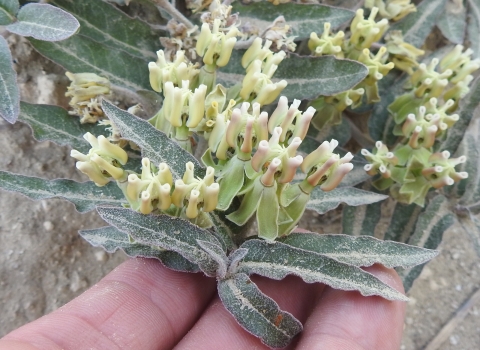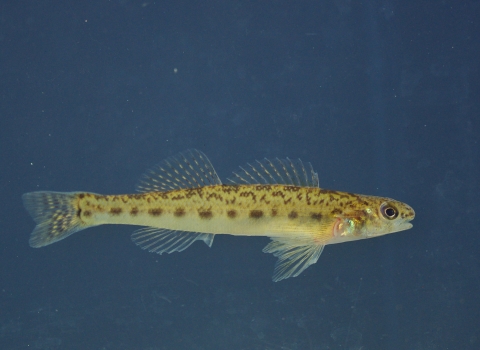Carlsbad, California – Five species no longer warrant Endangered Species Act (ESA) protection thanks to conservation work by the U.S. Navy on San Clemente Island. The U.S. Fish and Wildlife Service is proposing to delist the San Clemente Island paintbrush, lotus, larkspur, bushmallow and Bell’s sparrow due to the Navy’s efforts to reduce and manage threats to the species.
“The Navy has been dedicated to improving habitat for these species over the past four decades, and their efforts have proven instrumental to their recovery,” said Paul Souza, Regional Director for the U.S. Fish and Wildlife Service. “The proposed delisting of these species builds on the successful recovery and delisting of the island night lizard in 2014, and reflects the strength of our conservation partnership with the Navy and others that manage natural resources on the Channel Islands.”
Located 64 miles off the coast of San Diego County, San Clemente Island is owned and managed by the Navy and is the primary maritime training area for the Navy Pacific Fleet and Sea, Air and Land Forces.
The island was historically used for livestock ranching. When non-native animals like goats and pigs were introduced to the area, they destroyed native habitat which eventually led to the five species being listed under the ESA in 1977.
To help recover the species, the Navy created an integrated natural resources management plan for the island. The Navy’s conservation actions included nonnative species removal, implementation of erosion and fire control measures, surveys and monitoring. Their work was successful and the Service has determined that the five species no longer warrant ESA protection.
The Service is working with the Navy to develop post-delisting monitoring plans for the species. These documents will include measures to detect and halt population decline so the species will continue to thrive for future generations.
The San Clemente Island paintbrush is a perennial subshrub between one and two and a half feet tall with yellow flowers. The San Clemente Island lotus is a semi-woody subshrub typically less than four feet tall with small yellow flowers. The San Clemente Island larkspur is an herbaceous perennial in the buttercup family. It is generally less than two feet tall with white flowers. The San Clemente Island bushmallow is a rounded shrub two to three feet tall whose flowers have pink, white and fading lavender petals. The San Clemente Island Bell’s sparrow is a non-migratory subspecies of Bell’s sparrow. It is grayish-brown with a small dark breast spot, white eye rings and distinctive white and black malar stripes. It is approximately five to six inches long and weighs on average 0.59 ounces, which is less than a golf ball.
The proposed rule will publish in the Federal Register on May 5, 2021, opening a 60-day public comment period. The Service will consider comments from all interested parties received by July 6, 2021. Information on how to submit comments is available at www.regulations.gov by searching under docket number FWS–R8–ES–2020–0074.
Photos of the San Clemente Island species are available here: https://www.flickr.com/photos/usfws_pacificsw/albums/72157715289802288
The U.S. Fish and Wildlife Service works with others to conserve, protect, and enhance fish, wildlife, plants, and their habitats for the continuing benefit of the American people. For more information about our work and the people who make it happen, visit www.fws.gov/cno or connect with us via Facebook, Twitter, YouTube, and Flickr.
-FWS-


